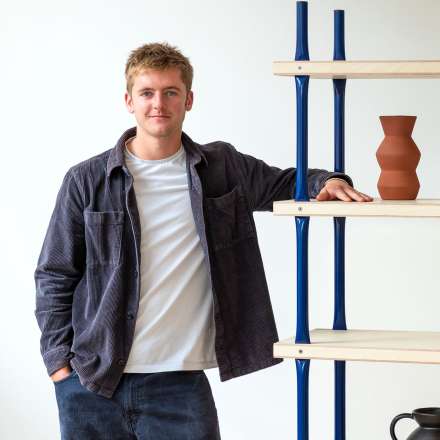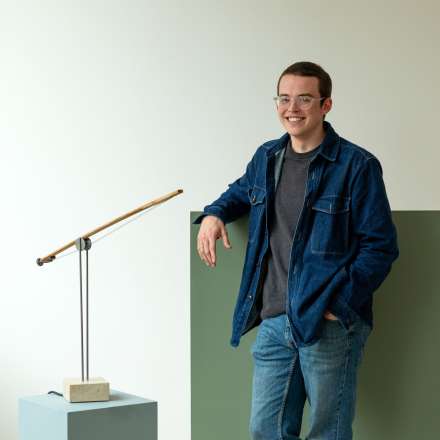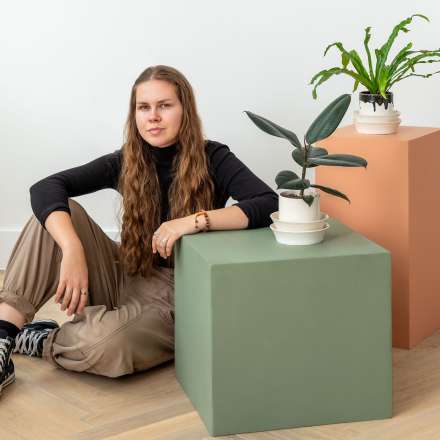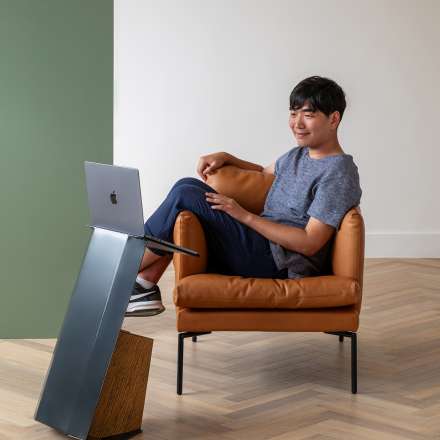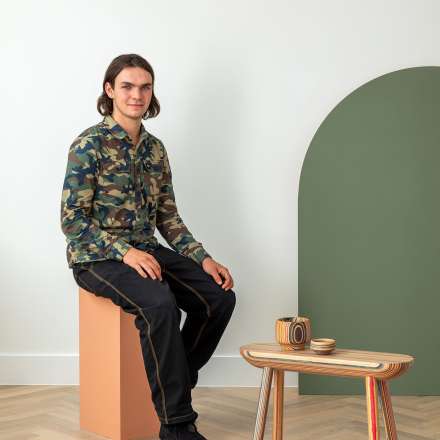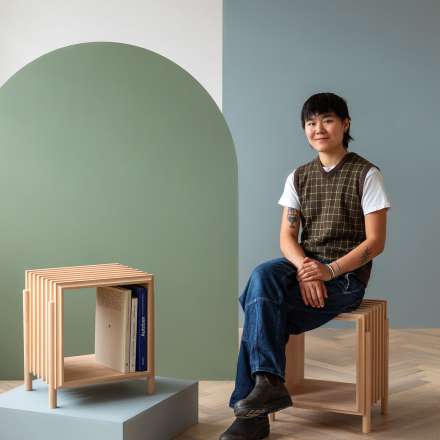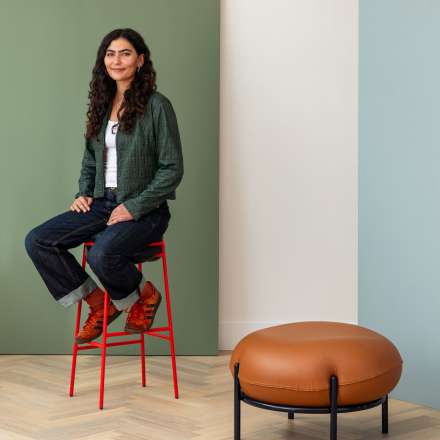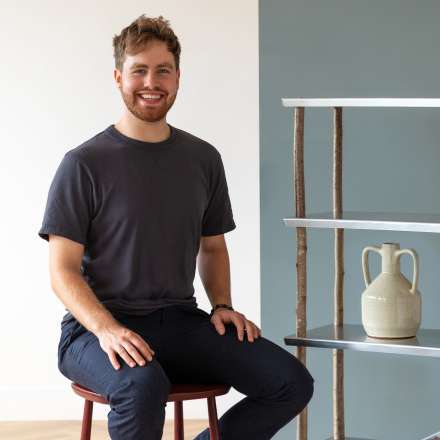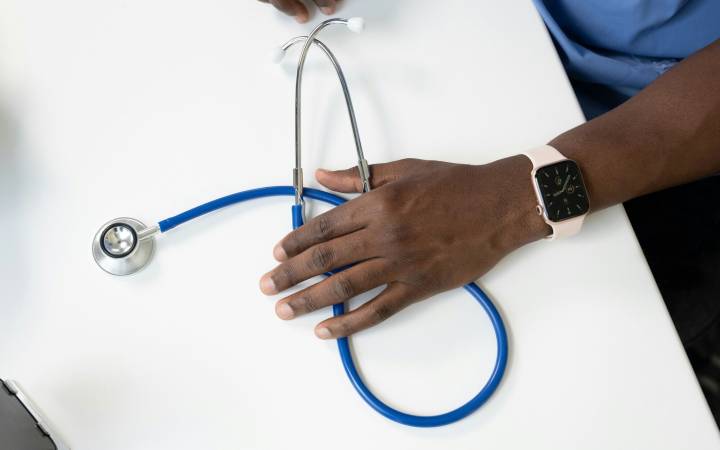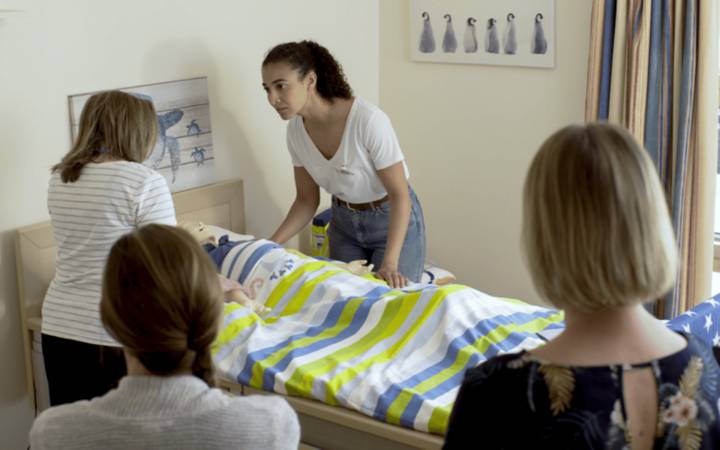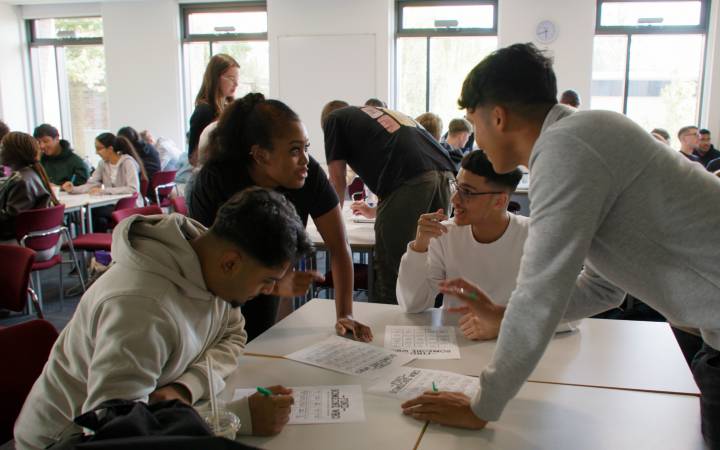Kingston School of Art product and furniture design graduates collaborate with leading British furniture brand Heal's to create items for flagship store
Posted Wednesday 4 October 2023
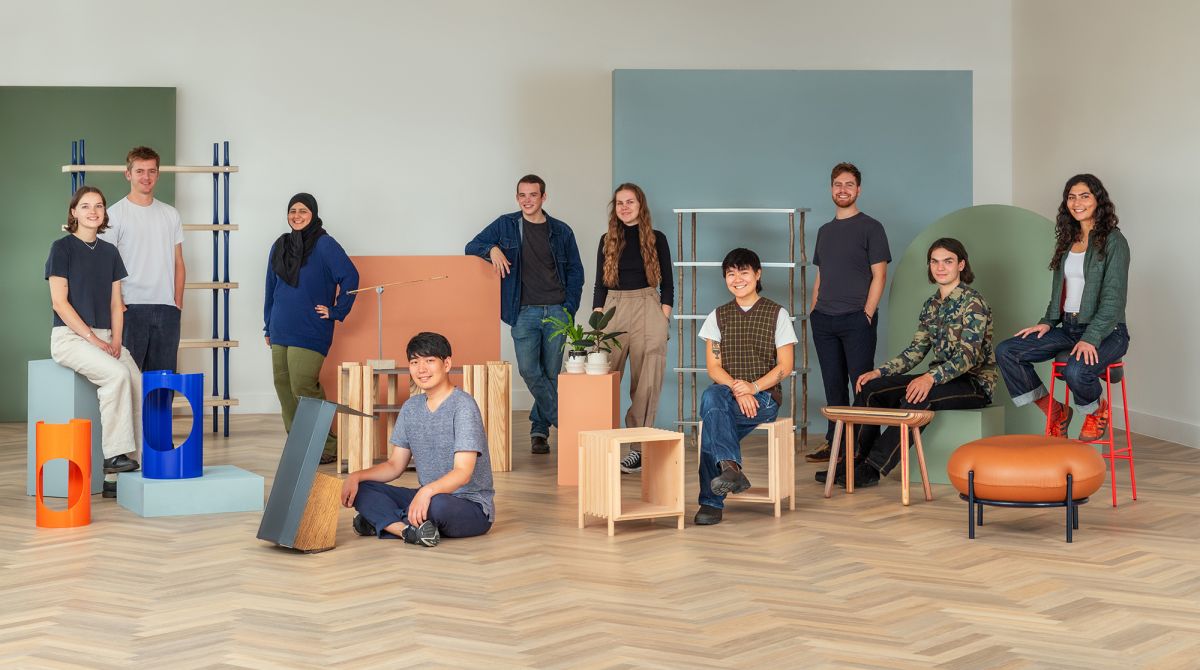 The ten Kingston School of Art graduates with their work featured inside Heal's flagship store.
The ten Kingston School of Art graduates with their work featured inside Heal's flagship store.
Ten graduates from Kingston School of Art's product and furniture design BA (Hons) course have worked with high-end British furniture retail company Heal's to create products for its flagship store that reflect the evolving needs of the brand's clientele and place a strong emphasis on sustainable design.
Their designs, which they produced for their final-year projects while at Kingston University, were on display at Heal's flagship store on Tottenham Court Road during London Design Festival in September, with the brand now considering three of the pieces for manufacture.
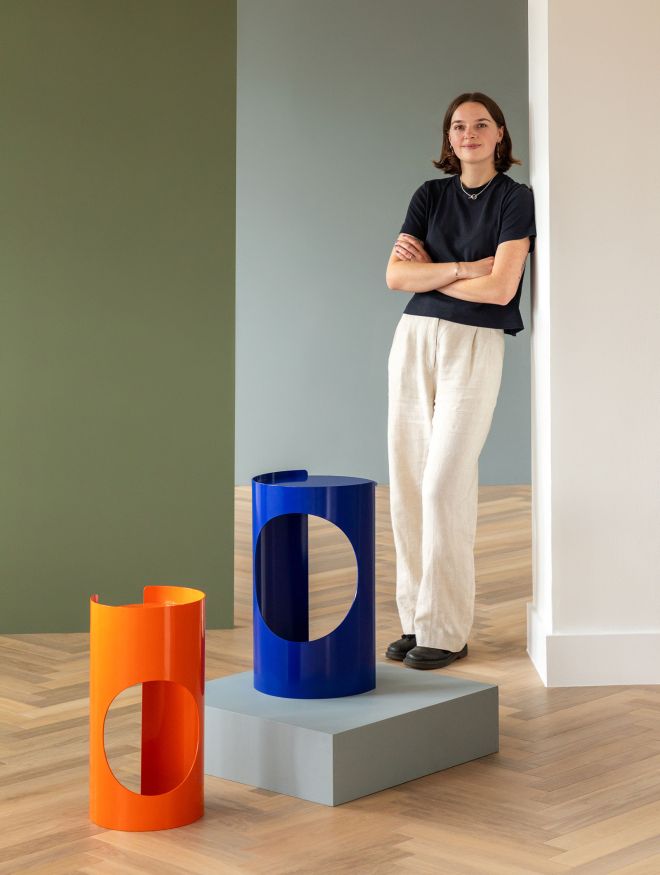 Josephine Ryan-Gill's Cut from One nesting side tables create no waste during production.Among the designers whose work has been shortlisted for potential production is Josephine Ryan-Gill. Her project, Cut from One, comprises of two nesting side tables which produced no offcuts during their manufacture.
Josephine Ryan-Gill's Cut from One nesting side tables create no waste during production.Among the designers whose work has been shortlisted for potential production is Josephine Ryan-Gill. Her project, Cut from One, comprises of two nesting side tables which produced no offcuts during their manufacture.
"I wanted to explore this idea of no waste and trying to minimise the environmental footprint of a piece of furniture at every stage, from the manufacturing process, to packaging and transportation, all the way through to the product's end of life stage," Josephine explained.
The tables are made entirely of one sheet of aluminium and the tabletops are cut from within the body of the table's structure meaning nothing is wasted during the manufacturing process. Designed to be stacked, packaged and transported inside each other, they require half the amount of space that they would typically need, helping to minimise waste in terms of the amount of material and space needed during the packaging and transportation phases.
Powder coating was chosen as the finish for the tables due to its durability and because it produces significantly less hazardous waste in comparison to liquid paint and does not emit any pollutants into the atmosphere. This also means the tables are fully recyclable, as both the powder coating can be removed and recycled, as can the aluminium.
Another designer whose work is being considered for manufacture is Jack Allfrey. His project, Crush Shelving, is a shelving system stemming from extensive material exploration into steel tube flattening.
Tube flattening refers to the process of creating flat junctions in steel tubes in order to fix it to a flat surface. "I flattened four individual tubes using Kingston School of Art's hydraulic press, creating individual junctions that then slot into the plywood shelves," Jack explained. "Tube flattening is used a lot on furniture, but this usually a hidden feature and I wanted to make it more of a prominent feature."
The process is both cost effective and sustainable, with no need to cut the tubes, creating no waste.
Aperture by Sumayyah Zahir is the third project being considered for production, which puts a spin on traditional sideboards. Current and past sideboards on the market are large, closed pieces of furniture that are normally used as a statement piece in most homes. Aperture complements the user's existing items within a visually interactive environment and open structure.
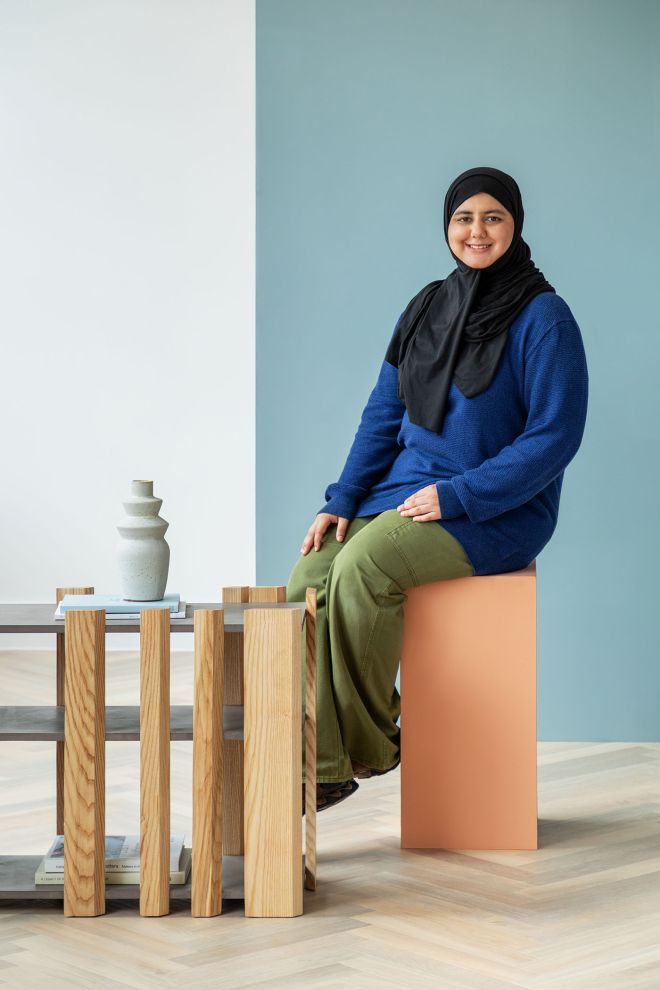 Sumayyah Zahir's Aperture puts a spin on traditional sideboards creating a visually interactive and open structure."I wanted to create something that makes more of a statement of the items in the home," Sumayyah explained. "The ash wood slats are slightly angled, so when you walk around it, the items become distorted and you can see them from different perspectives."
Sumayyah Zahir's Aperture puts a spin on traditional sideboards creating a visually interactive and open structure."I wanted to create something that makes more of a statement of the items in the home," Sumayyah explained. "The ash wood slats are slightly angled, so when you walk around it, the items become distorted and you can see them from different perspectives."
Other student projects exhibited at the Heal's flagship store during the London Design Festival included a task lamp by designer Tom Clark made from a violin string with a low voltage LED light source, an innovative storage system from Honey Birch which aims to highlight the benefits of using British beech timber within the furniture industry, and a range of ceramic vessels by Faye McEwen which enables plants to be watered bottom up preventing drowning and over watering.
Students worked on a five-week brief during their final year, where they were tasked with creating manufacturable design concepts for Heal's. These had to be relevant and practical additions to what the brand currently offers, product and furniture design course leader Phil Davies explained. "They needed to think about the Heal's brand now and how it will change in the future and what their customers need, as well as making sure the products are functional and incorporate sustainability – whether that be the materials used or designing better systems or processes of manufacturing," he said.
Mr Davies also stressed the importance of students working with brands such as Heal's. "The course is heavily wedded to professional practice, with students getting the opportunity to work on a variety of live industry briefs. The brands benefit because they get fresh, new perspectives, enabling them to evolve with the times and diversify what they currently offer, and it gives our students the opportunity to actually make a difference and bring change to the industry," he said.
Senior furniture buyer at Heal's Hannah Armstrong spoke about the benefits of working with the next generation of designers. “With a proud history of championing design innovation and shining a spotlight on talent, we are committed to using our platform to create opportunities for the next generation, and support rising stars and talented individuals at the start of their careers," she said.
“Over the years, Heal’s has built a fantastic relationship with Kingston School of Art, previously working closely with alumni such as Matthew Hilton and George Richardson, who joined the long-standing Heal’s Discovers programme when his final year project was chosen to form part of our SS23 collection. As a Kingston School of Art graduate, I know first-hand how students are encouraged to be creative yet commercially focused in their work, and I continue to be impressed by their talent each year. All students should be very proud of their work; the final projects brilliantly hit the brief, showcasing craftsmanship, a considered use of materials and a creative response to the evolving needs of the modern home," she added.
- Find out more about studying product and furniture design at Kingston School of Art.
Contact us
General enquiries:
Journalists only:
- Communications team
Tel: +44 (0)20 8417 3034
Email us
